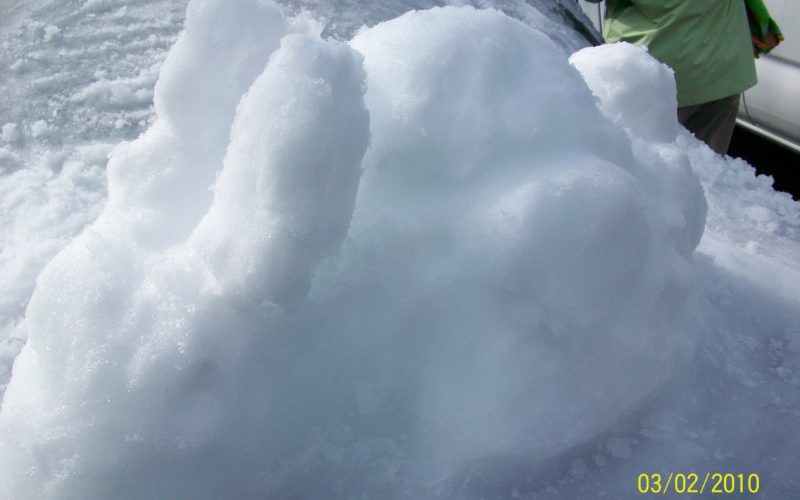Northwest Arkansas once had four distinct seasons. Now, we have unpredictable weather patterns that sometimes bring more rain than usual or less snow than average over many years. Winter has become brown instead of white. Longtime residents who remember snowy winters may be asking themselves where the snow went. Historians may wonder why 100- and 200-year-old letters from this area mention snow, but we rarely see it nowadays. And meteorologists are puzzled, too.
Chief Meteorologist Darby Bybee wrote this for 40/29 in February 2019: “Fayetteville has recorded only 2.6 inches of snow the last four winters (including this one), which puts us at about a 24 inch snowfall deficit. An average single winter brings 7 inches of snow to Fayetteville.” I couldn’t find results from winter 2019-20 to see how much snow has been measured this year, but anyone can see it hasn’t been much more than a dusting. Bybee noted that bad weather patterns and global warming were likely triggering a snowless streak, and that it was hard to say when the streak would end.
However, since correlation does not equal causation, Bybee accurately reported that snowless winters or just less snow than average don’t necessarily mean global warming is causing less snow to become a trend. But there have been two snowless streaks since 2006. He also shared data on recent record snowfalls. The winter of 2009-10 was “the snowiest winter on record in Fayetteville, when 33 inches of snow fell.” The following year brought a single storm that dumped a foot or two of snow in the region. And the year after that was well above our 7 inch average, with 18 inches of snow falling in 2013-14.
Basically, we’ve noticed multi-year absences of snow followed by multi-year record snowfalls, with record snowless winters following that. The issue may not be that the snow seems gone, but that, like many effects of climate change, winters are changing. Scientific American offers a more detailed look at this in their 2019 article by Chelsea Harvey, “Love Snow? Here’s How it’s Changing.” Scientists broadly agree that snow as we know it is changing, but anticipating exactly how it will change from one location to the next, from one year to the next is challenging. The city of Fayetteville is noting weather changes and encouraging residents to react and prepare.
“Climate change is affecting the daily lives of Arkansans in a variety of ways,” according to the city of Fayetteville website. “The EPA notes that the most pressing climate-related concern for Arkansas is the increase in heavy rain events, severe flooding and storms. Heavy downpours and increasing annual rainfall can have catastrophic effects, including property damage, reduced crop yields, harm to livestock and storm water and street infrastructure damage.” There has been more rainfall than usual recorded in recent years. As with snow, we could see continuing rainfall increases or undulation between drought and flooding.
So what can we do? Obviously, we can’t control the weather. The city offers dozens of small steps residents can take to help fight climate change (these are listed on their website, Fayetteville-AR.gov under What You Can Do to Fight Climate Change). Together, we multiply our impact, so taking action to reduce consumption of fossil fuels is good. It’s also wise to prepare for changing weather. You may want to devise ways to protect your home or business from floods, learn how to conserve water for future droughts, and in general, be prepared for more severe weather including more or less snow than usual. Plan ahead. That’s a good idea, no matter how much snow falls.
Amanda Bancroft is a writer, artist, and naturalist living in an off-grid tiny house on Kessler Mountain. She and her husband Ryan blog about their adventures and offer tips to those wanting to make a difference at www.RipplesBlog.org.










